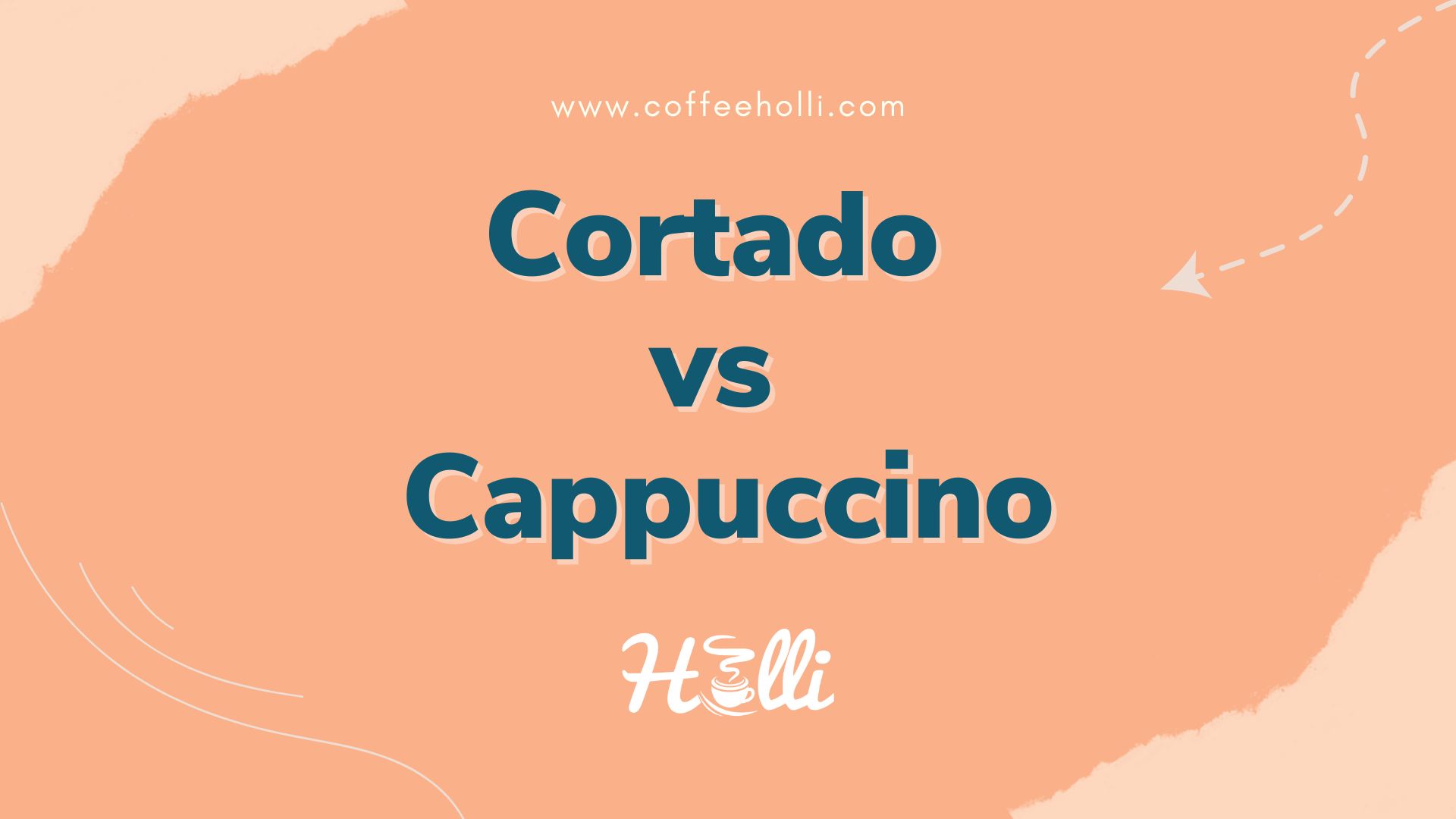
Quick question:
How much do you know about popular espresso drinks?
Well, there are many different variations of espresso today. And to figure out which one works for you, it’s important to learn what makes each unique.
That said:
This post compares the most popular espresso-based drink, a Cappuccino, and a traditional Spanish coffee drink, a Cortado.
Now:
While both are made with the same ingredients, they are prepared differently, served differently, and taste and look different.
Below, I will explain how they are prepared and how to quickly tell them apart.
Without further ado, let’s get started, shall we?
Table of Contents
Cortado Vs Cappuccino
A Cappuccino is made with equal amounts of espresso, steamed milk, and foamed milk. On the other hand, a Cortado is prepared with an equal amount of espresso and steamed milk, with no foam. Because it contains less milk, a Cortado is smaller and punchy compared to a Cappuccino, which is larger and sweeter.
Now:
The difference between Cortado and Cappuccino is not just the ratios, there is more. Here’s a detailed yet brief comparison of these two coffee drinks.
| Cortado | Cappuccino | |
|---|---|---|
| Origin | Spain | Italy |
| Ratios | 1:1Espresso and steamed milk | 1:1:1 Espresso: steamed milk: foamed milk |
| Number of espresso shots | 2 | 1 or 2 |
| Serving size | 3-4 oz cup | 5–6 oz glass |
| Caffeine content | 126mg | 63mg or 126mgs |
| Calories | 36 | 18-36 |
| Toppings | Vanilla syrup Honey syrup | Sprinkles Cocoa powder Cinnamon Chocolate powder |
| Taste | Intense espresso taste yet sweet | Creamy and smooth with a light coffee flavor |
5 Key Differences Between Cortado and Cappuccino
1. Origin
The first difference between a Cortado and Cappuccino is their origins. Cortado, (which in Spanish means “to cut”), originated in the Basque Country in Spain.
On the other hand:
The Cappuccino drink originated in Italy in the late 1800s. The drink got its name from the color of the habits worn by the Catholic Capuchin friars.
2. Ingredients
Get this:
Cappuccino and Cortado are both espresso-based drinks prepared with espresso and milk. However, the ratios and form of milk differ.
A Cappuccino is prepared with espresso, steamed milk, and foamed milk in a ratio of 1:1:1. Whereas, a Cortado is prepared with equal amounts of espresso and steamed milk in the ratio of 1:1. Generally, in a Cortado the milk has very little or no foam.
Moreover:
While the standard Cortado is prepared with 2 shots of espresso, a typical Cappuccino serving can have either 1 or 2 shots.
However, over time the ratios have changed from one place to another.
For instance:
Starbucks UK Cortado’s recipe includes 2 ristretto shots, semi-skimmed milk, and toppings. This is a deviation from the traditional recipe that uses espresso shots without toppings.
The classic traditional Cortado recipe also does not feature art, which is popular nowadays in the US.
3. Taste
Cortado and Cappuccino have different tastes and you can easily tell them apart.
Because a Cappuccino is prepared with steamed milk and foamed milk; thus, making it sweeter, foamier, and milkier.
Plus, despite having bolder coffee flavors, this type of espresso often feels lighter or gentler than a Cortado.
In contrast:
A Cortado contains an equal amount of milk and espresso. That is 2 shots of espresso and 2 ounces of milk.
While the milk tones down the acidity and intensity of the espresso, the espresso flavor is still sharp and distinct but the drink is smoother and sweeter (compared to plain espresso).
4. Serving
Now:
When it comes to serving size, a Cortado is smaller than a Cappuccino. This is mainly because the latter is a three-part combo.
Typically, a Cappuccino is served in a 5-6oz cup, while a Cortado is served in a 3-4oz glass. However, this changes from place to place but the ingredient ratios remain constant.
Also, a Cortado is typically served in a glass, while a Cappuccino is served in a cup.
Fun fact:
A Cortado is sometimes called Gibraltar coffee when served in a Gibraltar glass.
5. Nutritional Value
Fact:
The amount of caffeine in a cup of Cortado or Cappuccino depends on the number of espresso shots in it.
Since a Cortado is typically prepared with 2 shots of espresso, it contains about 126mg of caffeine.
On the other hand, a cup of Cappuccino can have 1 or 2 shots of espresso resulting in 63mg or 126mg of caffeine respectively
On the other hand, a cup of Cappuccino prepared with 1 shot of espresso contains about 63mg of caffeine and 126mg if two shots of espresso are used.
More so:
When it comes to the number of calories, a cup of Cappuccino contains more calories since it contains more milk.
Conclusion
Cortados and Cappuccinos are two popular espresso-based drinks. To recap, here is how they differ
- A Cappuccino is made with equal amounts of espresso, steamed milk, and foamed milk, while a Cortado contains the same amount of espresso and steamed milk with no foam.
- Because a Cappuccino has more milk, it’s sweeter and creamier, while a Cortado is smooth with a strong espresso flavor and an ounce of sweetness.
- Cappuccino is served in 5-6Oz servings, while a Cortado is served in 3-4Oz cups.
- Cortado is prepared with untextured milk with no foam or froth.
Cappuccino has three distinct layers, while a Cortado blends espresso with milk.
Frequently Asked Questions
A cup of Cappuccino prepared with one shot of espresso has about 63mg of caffeine and 126mgs if it contains 2 shots.
A standard cup of Cortado with 2 shots of espresso contains about 126mg of caffeine. According to the USDA, a shot of espresso (30ml) prepared using 7 grams of coffee contains 63mgs of caffeine.
Yes, a Cortado is stronger than a Cappuccino. The two parts of milk in a Cappuccino dilute the espresso intensity.


